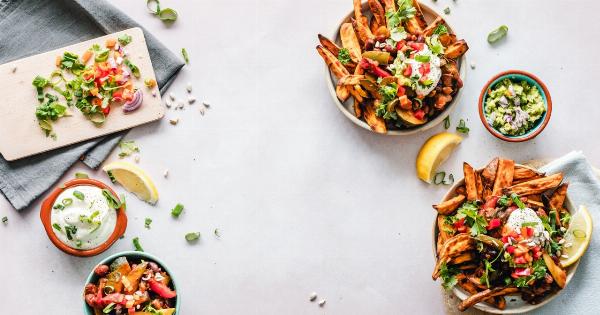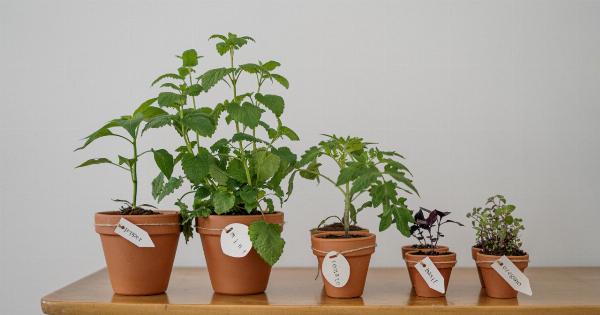Superbugs, also known as antibiotic-resistant bacteria, pose a grave threat to public health. These resilient bacteria have become resistant to conventional antibiotics, rendering many treatment options ineffective.
The emergence of superbugs has led scientists and researchers to explore alternative solutions for combating these deadly pathogens. Surprisingly, one potential weapon in the fight against superbugs might lie in a humble vegetable—the broccoli.
The Rise of Superbugs
In recent years, there has been a sharp increase in the number of antibiotic-resistant infections worldwide.
Superbugs such as methicillin-resistant Staphylococcus aureus (MRSA), vancomycin-resistant enterococci (VRE), and carbapenem-resistant Enterobacteriaceae (CRE) have become a major concern in hospitals and communities. These bacteria are incredibly difficult to treat and are responsible for thousands of deaths every year.
One of the primary causes of antibiotic resistance is the overuse and misuse of antibiotics. The prolonged and indiscriminate use of these drugs has created an environment in which bacteria can adapt and develop resistance mechanisms.
As a result, conventional antibiotics that were once effective against certain infections are no longer able to combat these superbugs.
Broccoli – A Surprising Contender
Broccoli, a cruciferous vegetable, has long been hailed for its health benefits. It is a rich source of vitamins, minerals, and fiber, and is associated with a reduced risk of various diseases, including cancer and heart disease.
However, recent studies have uncovered an intriguing property of broccoli—it contains compounds that have the potential to fight antibiotic-resistant bacteria.
The Power of Sulforaphane
Broccoli contains a compound called sulforaphane, which has been shown to possess antimicrobial properties.
Sulforaphane is a natural compound found in cruciferous vegetables and is responsible for the bitter taste commonly associated with these vegetables.
Research has demonstrated that sulforaphane exhibits potent antibacterial activity against a wide range of bacteria, including MRSA and VRE.
It works by targeting the bacterial enzymes responsible for antibiotic resistance, effectively disabling their mechanisms and making the bacteria susceptible to antibiotics once again.
Sulforaphane and Antibiotic Synergy
Another remarkable quality of sulforaphane is its ability to enhance the action of conventional antibiotics. Studies have shown that when sulforaphane is combined with antibiotics, their effectiveness is significantly boosted.
This phenomenon, known as antibiotic synergy, is a potential game-changer in the fight against superbugs.
By combining sulforaphane with conventional antibiotics, lower doses of antibiotics can be used, which reduces the risk of antibiotic resistance.
Additionally, this combination approach has the potential to broaden the spectrum of antibiotics, making them effective against a wider range of bacteria.
Unlocking the Mechanisms
Scientists are actively studying the precise mechanisms by which sulforaphane exerts its antimicrobial effects. One key mechanism involves the regulation of bacterial gene expression.
Sulforaphane has been found to inhibit the expression of genes responsible for antibiotic resistance, preventing bacteria from developing resistance mechanisms.
Furthermore, sulforaphane has demonstrated the ability to modulate the bacterial membrane, making it more permeable to antibiotics. This allows antibiotics to penetrate the bacterial cell more effectively, enhancing their bactericidal activity.
The Road to Clinical Application
While the preliminary findings regarding broccoli’s potential in fighting superbugs are promising, further research is necessary before clinical applications can be developed.
Scientists are working to establish the optimal dosage of sulforaphane and to determine the best delivery methods. They are also investigating the safety profile of sulforaphane and any potential side effects.
Additionally, researchers are exploring the potential use of other cruciferous vegetables that contain similar compounds to sulforaphane.
These investigations aim to identify alternative sources of antimicrobial compounds that could be used in combination therapies.
Broccoli, a Part of the Solution
The emergence of superbugs and the escalating rates of antibiotic resistance necessitate innovative solutions. While broccoli alone may not be the singular answer to this global health crisis, it could certainly be a valuable weapon in our arsenal.
The antimicrobial properties of sulforaphane, combined with its ability to enhance antibiotic action, make broccoli a fascinating avenue for future research.
If scientists can harness the full potential of broccoli and its antimicrobial compounds, we may be able to develop new treatments that can combat antibiotic-resistant bacteria effectively.
Broccoli, often overlooked on dinner plates, might just be our key to fighting superbugs and safeguarding public health.






























